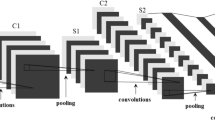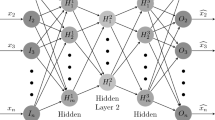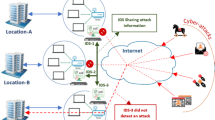Abstract
We consider the question whether synchronization/alignment methods are still useful/necessary in the context of side-channel attacks exploiting deep learning algorithms. While earlier works have shown that such methods/algorithms have a remarkable tolerance to misaligned measurements, we answer positively and describe experimental case studies of side-channel attacks against a key transportation layer and an AES S-box where such a preprocessing remains beneficial (and sometimes necessary) to perform efficient key recoveries. Our results also introduce generalized residual networks as a powerful alternative to other deep learning tools (e.g., convolutional neural networks and multilayer perceptrons) that have been considered so far in the field of side-channel analysis. In our experimental case studies, it outperforms the other three published state-of-the-art neural network models for the data sets with and without alignment, and it even outperforms the published optimized CNN model with the public ASCAD data set. Conclusions are naturally implementation-specific and could differ with other data sets, other values for the hyper-parameters, other machine learning models and other alignment techniques.













Similar content being viewed by others
References
Abadi, M., Agarwal, A., Barham, P., Brevdo, E., Chen, Z., Citro, C., Corrado, G.S., Davis, A., Dean, J., Devin, M., Ghemawat, S., Goodfellow, I., Harp, A., Irving, G., Isard, M., Jia, Y., Jozefowicz, R., Kaiser, L., Kudlur, M., Levenberg, J., Mané, D., Monga, R., Moore, S., Murray, D., Olah, C., Schuster, M., Shlens, J., Steiner, B., Sutskever, I., Talwar, K., Tucker, P., Vanhoucke, V., Vasudevan, V., Viégas, F., Vinyals, O., Warden, P., Wattenberg, M., Wicke, M., Yu, Y., Zheng, X.: TensorFlow: large-scale machine learning on heterogeneous systems. Software available from https://www.tensorflow.org (2015)
Archambeau, C., Peeters, E., Standaert, F.-X., Quisquater, J.-J.: Template attacks in principal subspaces. In: Cryptographic Hardware and Embedded Systems—CHES 2006, 8th International Workshop, Yokohama, Japan, October 10–13, 2006. Proceedings, pp. 1–14 (2006)
Cagli, E., Dumas, C., Prouff, E.: Convolutional neural networks with data augmentation against jitter-based countermeasures—profiling attacks without pre-processing. In: Cryptographic Hardware and Embedded Systems—CHES 2017—19th International Conference, Taipei, Taiwan, September 25–28, 2017. Proceedings, pp. 45–68 (2017)
Carbone, M., Conin, V., Cornelie, M.-A., Dassance, F., Dufresne, G., Dumas, C., Prouff, E., Venelli, A.: Deep learning to evaluate secure RSA implementations. Cryptology ePrint Archive, Report 2019/054 (2019). https://eprint.iacr.org/2019/054
Chari, S., Rao, J.R., Rohatgi, P.: Template attacks. In: Kaliski Jr., B.S., Koç, Ç.K., Paar, C. (eds.) Cryptographic Hardware and Embedded Systems—-CHES 2002, 4th International Workshop, Redwood Shores, CA, USA, August 13–15, 2002. Revised Papers, Lecture Notes in Computer Science, vol. 2523, pp. 13–28. Springer (2002)
Chollet, F., et al.: Keras. (2015). https://github.com/fchollet/keras
Gierlichs, B., Lemke-Rust, K., Paar, C.: Templates vs. stochastic methods. In: Cryptographic Hardware and Embedded Systems—CHES 2006, 8th International Workshop, Yokohama, Japan, October 10–13, 2006. Proceedings, pp. 15–29 (2006)
He, K., Zhang, X., Ren, S., Sun, J.: Deep residual learning for image recognition. CoRR. (2015). arxiv:1512.03385
He, K., Zhang, X., Ren, S., Sun, J.: Identity mappings in deep residual networks. CoRR. (2016). arxiv:1603.05027
Hettwer, B., Gehrer, S., Güneysu, T.: Profiled power analysis attacks using convolutional neural networks with domain knowledge. In: Cid, Carlos, Jacobson Jr., M. (eds.) Selected Areas in Cryptography—SAC 2018—25th International Conference, Calgary, AB, Canada, August 15–17, 2018. Revised Selected Papers, Lecture Notes in Computer Science, vol. 11349, pp. 479–498. Springer (2018)
Heuser, A., Zohner, M.: Intelligent machine homicide—breaking cryptographic devices using support vector machines. In: Schindler, W., Huss, S.A. (eds.) Constructive Side-Channel Analysis and Secure Design—Third International Workshop, COSADE 2012, Darmstadt, Germany, May 3–4, 2012. Proceedings, Lecture Notes in Computer Science, vol. 7275, pp. 249–264. Springer (2012)
Hospodar, G., Gerlichs, B., De Mulder, E., Verbauwhede, I., Vandewalle, J.: Machine learning in side-channel analysis: a first study. J. Cryptogr. Eng. 1(4), 293–302 (2011)
Ioffe, S., Szegedy, C.: Batch normalization: accelerating deep network training by reducing internal covariate shift. In: Bach, F.R, Blei, D.M. (eds.) Proceedings of the 32nd International Conference on Machine Learning, ICML 2015, Lille, France, 6–11 July 2015. JMLR Workshop and Conference Proceedings, vol. 37, pp. 448–456. (2015). http://www.jmlr.org/
Lerman, L., Poussier, R., Bontempi, G., Markowitch, O., Standaert, F.-X.: Template attacks vs. machine learning revisited (and the curse of dimensionality in side-channel analysis). In: Mangard, S., Poschmann, A.Y. (eds.) Constructive Side-Channel Analysis and Secure Design—6th International Workshop, COSADE 2015, Berlin, Germany, April 13–14, 2015. Revised Selected Papers, Lecture Notes in Computer Science, vol. 9064, pp. 20–33. Springer (2015)
Maghrebi, H., Portigliatti, T., Prouff, E.: Breaking cryptographic implementations using deep learning techniques. In: Carlet, C., Hasan, M.A., Saraswat, V. (eds.) Security, Privacy, and Applied Cryptography Engineering—6th International Conference, SPACE 2016, Hyderabad, India, December 14–18, 2016. Proceedings, Lecture Notes in Computer Science, vol. 10076, pp. 3–26. Springer (2016)
Nair, V., Hinton, G.E.: Rectified linear units improve restricted Boltzmann machines. In: Fürnkranz, J., Joachims, T. (eds.) Proceedings of the 27th International Conference on Machine Learning (ICML-10), June 21–24, 2010, Haifa, Israel, pp. 807–814. Omnipress (2010)
Pfeifer, C., Haddad, P.: Spread: a new layer for profiled deep-learning side-channel attacks. Cryptology ePrint Archive, Report 2018/880 (2018). https://eprint.iacr.org/2018/880
Picek, S., Heuser, A., Jovic, A., Legay, A.: Climbing down the hierarchy: hierarchical classification for machine learning side-channel attacks. In: Joye, M., Nitaj, A. (eds.) Progress in Cryptology—AFRICACRYPT 2017—9th International Conference on Cryptology in Africa, Dakar, Senegal, May 24–26, 2017. Proceedings, Lecture Notes in Computer Science, vol. 10239, pp. 61–78 (2017)
Picek, S., Samiotis, I.P., Kim, J., Heuser, A., Bhasin, S., Legay, A.: On the performance of convolutional neural networks for side-channel analysis. In: 8th International Conference, SPACE 2018, Kanpur, India, December 15–19, 2018. Proceedings, pp. 157–176. (2018)
Picek, S., Heuser, A., Jovic, A., Bhasin, S., Regazzoni, F.: The curse of class imbalance and conflicting metrics with machine learning for side-channel evaluations. IACR Trans. Cryptogr. Hardw. Embed. Syst. 2019(1), 209–237 (2019)
Poussier, R., Zhou, Y., Standaert, F.-X.: A systematic approach to the side-channel analysis of ECC implementations with worst-case horizontal attacks. In: Cryptographic Hardware and Embedded Systems—CHES 2017—19th International Conference, Taipei, Taiwan, September 25–28, 2017. Proceedings, pp. 534–554 (2017)
Prouff, E., Strullu, R., Benadjila, R., Cagli, E., Dumas, C.: Study of deep learning techniques for side-channel analysis and introduction to ASCAD database. Cryptology ePrint Archive, Report 2018/053 (2018). https://eprint.iacr.org/2018/053
Robyns, P., Quax, P., Lamotte, W.: Improving CEMA using correlation optimization. IACR Trans. Cryptogr. Hardw. Embed. Syst. 2019(1), 1–24 (2019)
Schindler, W., Lemke, K., Paar, C.: A stochastic model for differential side channel cryptanalysis. In: Rao, J.R., Sunar, B. (eds.) Cryptographic Hardware and Embedded Systems—CHES 2005, 7th International Workshop, Edinburgh, UK, August 29–September 1, 2005. Proceedings, Lecture Notes in Computer Science, vol. 3659, pp. 30–46. Springer (2005)
Silver, D., Schrittwieser, J., Simonyan, K., Antonoglou, I., Huang, A., Guez, A., Hubert, T., Baker, L., Lai, M., Bolton, A., Chen, Y., Lillicrap, T., Hui, F., Sifre, L., van den Driessche, G., Graepel, T., Hassabis, D.: Mastering the game of go without human knowledge. Nature 550, 354 (2017)
Srivastava, N., Hinton, G.E., Krizhevsky, A., Sutskever, I., Salakhutdinov, R.: Dropout: a simple way to prevent neural networks from overfitting. J. Mach. Learn. Res. 15(1), 1929–1958 (2014)
Standaert, F.-X., Koeune, F., Schindler, W.: How to compare profiled side-channel attacks? In: Abdalla, M., Pointcheval, D., Fouque, P.-A., Vergnaud, D. (eds.) Applied Cryptography and Network Security, 7th International Conference, ACNS 2009, Paris-Rocquencourt, France, June 2–5, 2009. Proceedings, Lecture Notes in Computer Science, vol. 5536, pp. 485–498 (2009)
Standaert, F.-X., Malkin, T., Yung, M.: A unified framework for the analysis of side-channel key recovery attacks. In: Joux, A. (ed.), Advances in Cryptology—EUROCRYPT 2009, 28th Annual International Conference on the Theory and Applications of Cryptographic Techniques, Cologne, Germany, April 26–30, 2009. Proceedings, Lecture Notes in Computer Science, vol. 5479, pp. 443–461. Springer (2009)
van den Oord, A., Dieleman, S., Zen, H., Simonyan, K., Vinyals, O., Graves, A., Kalchbrenner, N., Senior, A.W., Kavukcuoglu, K.: Wavenet: a generative model for raw audio. CoRR. (2016). arxiv:1609.03499
Wu, Y., Schuster, M., Chen, Z., Le, Q.V., Norouzi, M., Macherey, W., Krikun, M., Cao, Y., Gao, Q., Macherey, K., Klingner, J., Shah, A., Johnson, M., Liu, X., Kaiser, L., Gouws, S., Kato, Y., Kudo, T., Kazawa, H., Stevens, K., Kurian, G., Patil, N., Wang, W., Young, C., Smith, J., Riesa, J., Rudnick, A., Vinyals, O., Corrado, G., Hughes, M., Dean, J.: Google’s neural machine translation system: bridging the gap between human and machine translation. CoRR. (2016). arxiv:1609.08144
Xiong, W., Droppo, J., Huang, X., Seide, F., Seltzer, M., Stolcke, A., Yu, D., Zweig, G.: The microsoft 2016 conversational speech recognition system. CoRR. (2016). arxiv:1609.03528
Acknowledgements
François-Xavier Standaert is a Senior Research Associate of the Belgian Fund for Scientific Research (FNRS-F.R.S.). This work has been funded in parts by the EU through the ERC project SWORD (Consolidator Grant 724725) and the H2020 project REASSURE.
Author information
Authors and Affiliations
Corresponding author
Additional information
Publisher's Note
Springer Nature remains neutral with regard to jurisdictional claims in published maps and institutional affiliations.
Rights and permissions
About this article
Cite this article
Zhou, Y., Standaert, FX. Deep learning mitigates but does not annihilate the need of aligned traces and a generalized ResNet model for side-channel attacks. J Cryptogr Eng 10, 85–95 (2020). https://doi.org/10.1007/s13389-019-00209-3
Received:
Accepted:
Published:
Issue Date:
DOI: https://doi.org/10.1007/s13389-019-00209-3




